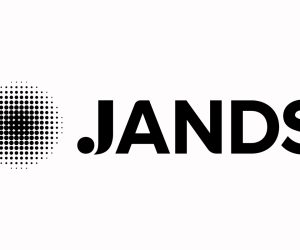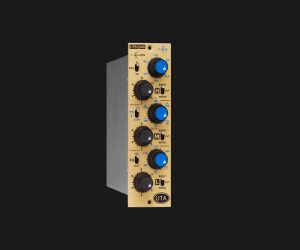
Big Day Out
AT spent the day at the Melbourne leg of the Big Day Out… so many bands, so little time.
Text: Christopher Holder
The popularity of the Big Day Out travelling circus shows no sign of abating. Despite the Melbourne date falling only about two hours before deadline it seemed crazy not to get along, take some snaps and see some crack FOH engineers in action.
So forgive me for the brevity of this report… I’m sure you’d all understand.
In a now-familiar configuration, the Big Day Out employs two main (side-by-side) stages that share the same front-of-house mix position. This ensures seamless changeovers. Well, that’s the theory at least. The fact is, when you spend any amount of time backstage and see what’s really involved in making these changeovers seem as simple as turning the pages of a book, it’s truly amazing that the guys manage to carry it off. But carry it off they did.
Imagining how the stages work is somewhat like imaging an X-ray of a chook’s rear end. After a perfect, fully formed egg is laid, there’s already another (almost fully) formed egg waiting in, erm… the wings, so to speak. Anyone’s who’s attended a festival like this (and paid any attention to the stage) has inevitably seen the techs scooting about on stage placing mics, testing guitars etc, while the front of house engineer cues it all up on the console – in other words, a line check. What you don’t see is that behind the backstage curtain the next act’s drumkit has already been miked up, for example, or the keyboard riser is ready to roll… One egg after another.
And, in keeping with the same tag-teaming main stage configuration, the festival’s PA provider, Jands Production Services (JPS), rigged three JBL Vertec arrays that were run Left, Right, Left – which is typical of their setup. But brand new to the JPS inventory was a whole stack of Dolby Lake Processors that were looking after [LOOKING AFTER? That’s a bit vague] the Clair 12AM wedge monitors and, indeed, the Vertec arrays and subs. Unfortunately, Melbourne on the 28th of January was a tad blustery which resulted in considerable high-frequency ‘smearing’ but the engineers’ response to the Lake/Vertec combination all seemed universally positive. Perhaps it was just my imagination but I couldn’t recall Vertec having the great vocal clarity I was hearing on the day.
DIFFERENT APPROACHES
This year Muse, Tool, Jet, Scribe, John Butler Trio, and Evermore were joined on the main stages by My Chemical Romance, The Killers and Eskimo Joe. And when you see so many on-stage setups being rolled in, rolled out and torn down it’s fascinating to compare and contrast the various approaches. With the guitars you’ll see everything from the simplicity of Scribe’s two Shure SM57s on a Mesa Boogie cab, to My Chemical Romance’s wall of Marshalls (one cab double-miked with a condenser/dynamic combo), or even The Killers’ FOH engineer, James Gebhard, ensuring clarity of the various clean/dirty sounds with a Shure KSM32 on each cab. Drum miking was just as varied. There was the conventional all-Shure approach of The Spazzies’ kit right through to John Butler Trio’s amazing-sounding drums/percussion with its unusually high single-overhead mic.
Anyway, enjoy the shots, I hope it gives you a taste of the action that went on behind the scenes.
GUITARS

The Butterfly Effect’s guitar sound is so top secret they’ve felt compelled to cover the cabs with a giant ink blot. The upper cabs are undeniably Orange, while the two Riveras find themselves subject to some serious attention from a total of four SM57s.
Eskimo Joe upgraded its guitar rig a couple of years back now, investing in some Class A amplification from Matchless and HiWatt. Here, engineer Gavin Tempany, keeps things simple with a single Shure SM57, letting the pricey amps speak for themselves.


The Killers’ guitarist Dave Keuning has three sounds captured by three Shure KSM32s. The top Fender cab provides a dirty and effected sound, one of the 12-inch HiWatt cabs is ‘dirty’ and the other ‘clean’. (The right hand Fender and HiWatt are there as insurance in case of speaker meltdown.) Prior to the three-mic regime there was one line coming from stage for the three sounds, but their engineer James Gebhard preferred the extra control and peace of mind of having three separate feeds from stage. Not sure why they’ve gaff’ed over the names of the guitar amps – must be like taking to the field with a ‘no name’ bat before getting that sponsorship from Gray Nicholls.
Evermore elected to combine the Line 6 Vetta II HD modelling amp with a Marshall cab. The Vetta can drive the Marshall as well as send a direct signal to FOH. In fact, it can actually output two entirely different tones simultaneously.


My Chemical Romance opted for a more no-nonsense approach to the Marshall sound – Classic 1960 quads, and lots of ’em. Although the appearance of the Shure KSM32 condenser is hardly ‘balls out’ rock ’n’ roll… thankfully the 57 isn’t too far away to redress the balance! Meanwhile, nothing like the hulking presence of an Ampeg SVT to instil calm among bass players.
DRUMS
Sick Puppies’ drummer, Mark Goodwin, opts for a pair of Audio-Technica AT4050 overheads (proving to be a popular choice among engineers in the know) and multiple Shure SM57s for toms and snare.


Evermore’s malnourished Hume brothers were all vying for top billing on stage, which probably accounts for drummer Dann setting up downstage. Bassist Peter sometimes employs a synth for low drones and has gaff’ed his keyboard to a Quiklok stand for extra portability – if you can believe it. A pair of Shure KSM141s took care of Dann’s overheads with clip-ons for the toms.
The Butterfly Effect drumkit, complete with pads, AKG 414s for overheads and a Shure KSM for hats. Note the green electrical tape that marks out stand positions – a great idea to ensure consistency of setup from gig to gig.


John Butler Trio has a deal with Rode microphones and it shows! A stereo NT4 as an overhead is placed quite high to provide what engineer Colin Ellis describes as a ‘smoother’ sound. He supplements that with NT5 pencil mics on the ride and sizzle cymbal as well as another on a pair of splash cymbals – ‘four overheads’ in all. Having been sent a number of Rode S1 vocal condensers, Colin thought he’d try one on the snare, and immediately fell in love with the sound – placing one top and bottom. For the kick drum Colin combined a Beyer M88 with a Sennheiser plate mic inside. Colin gets the sound he wants from each mic then kicks them out of phase – it loses some mids but results in a huge bottom end. All up, it was one of the best drum sounds I heard on the day.
Ally Spazzy, in full Shure flow. A Beta 57A on snare, Beta 52 on kick, KSM109 on hats and overheads, SM57s elsewhere.

PERSONNEL




(Top) The JPS front-of-house ‘babysitter’, Eric Sanderson Evans (gun muffs on head) with Nobby, the FOH Engineer for Tool; Colin Ellis (above) contends that ‘the only good system is a sound system’, Gavin Tempany impersonating a politician; and James Gebhard mid way through line check.
THE PA

One of the three main-stage JBL Vertec arrays. JPS has now married them to the new Dolby Lake Processor (above).

















RESPONSES